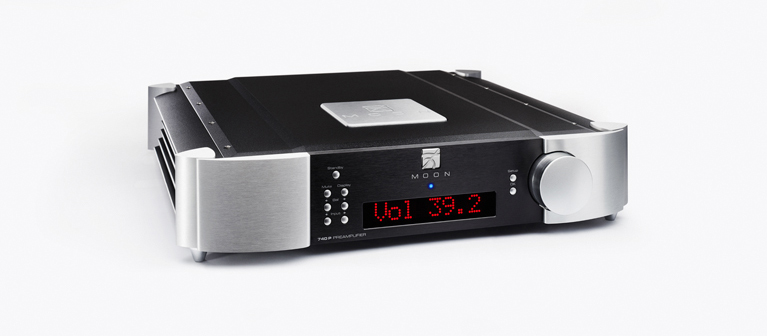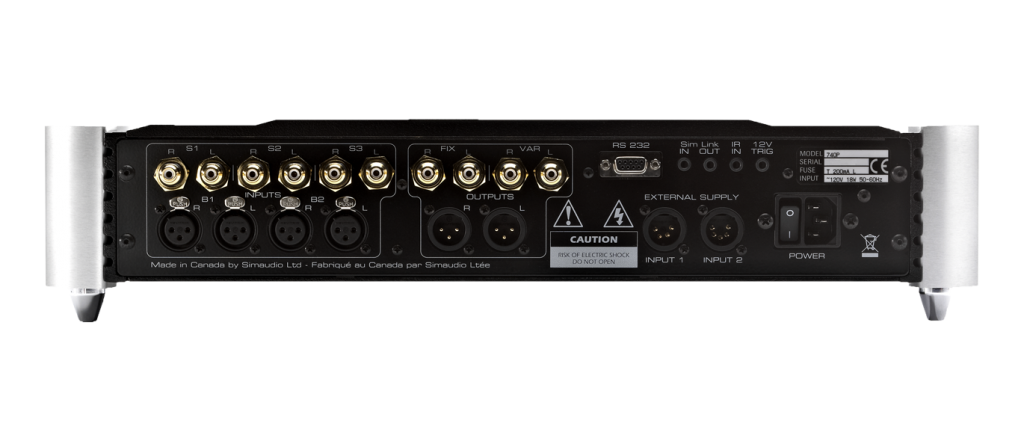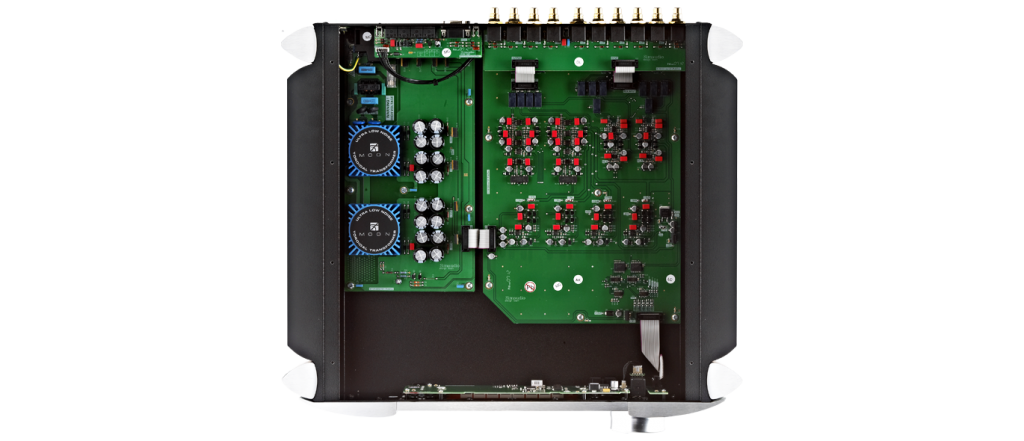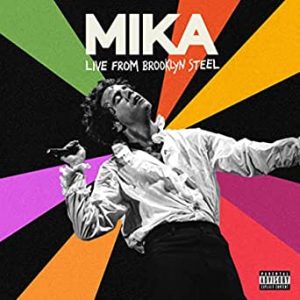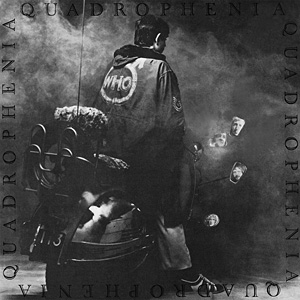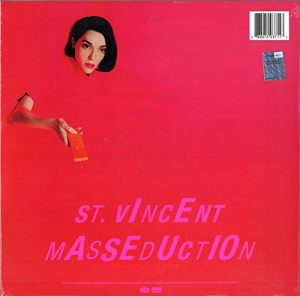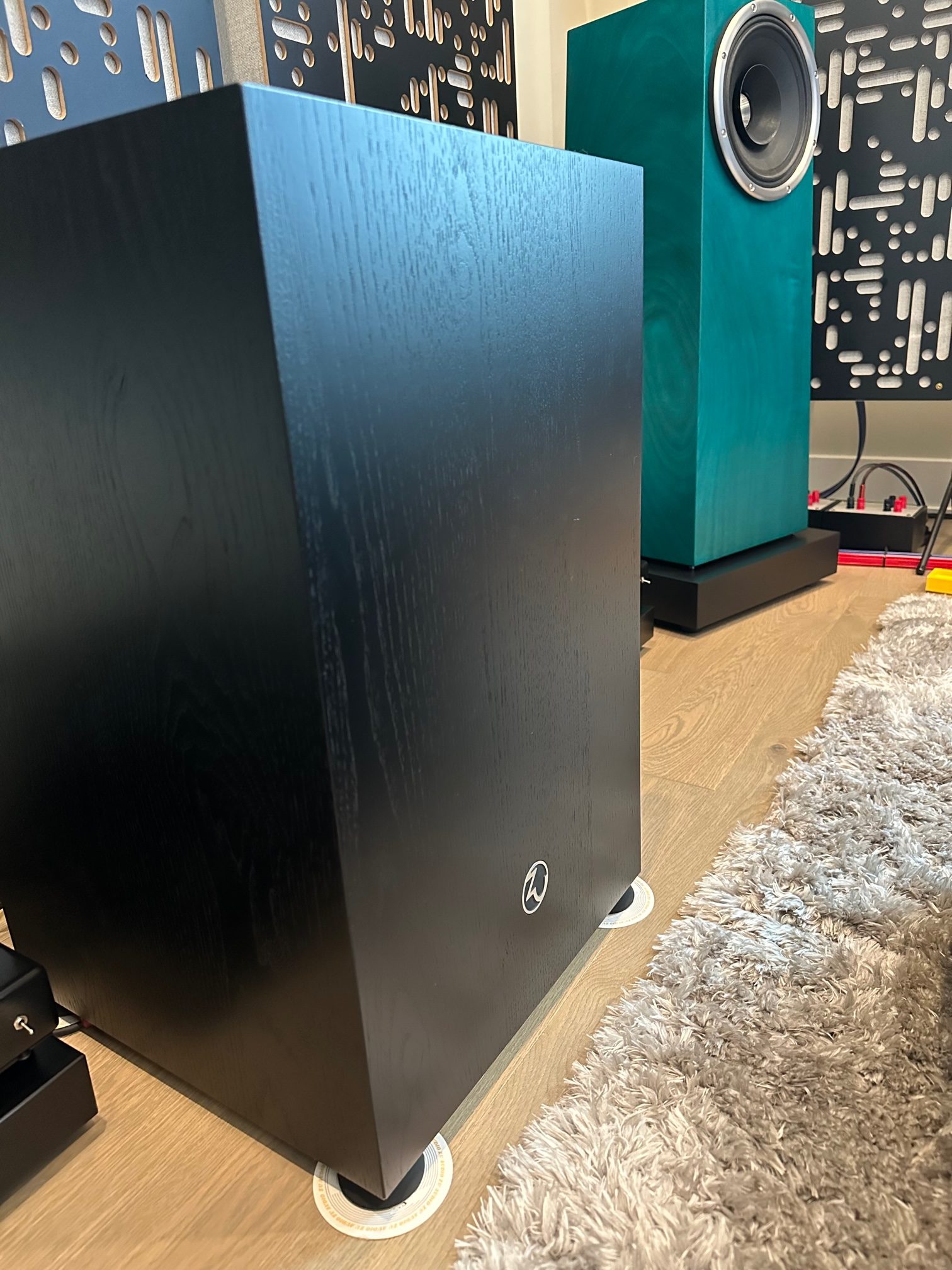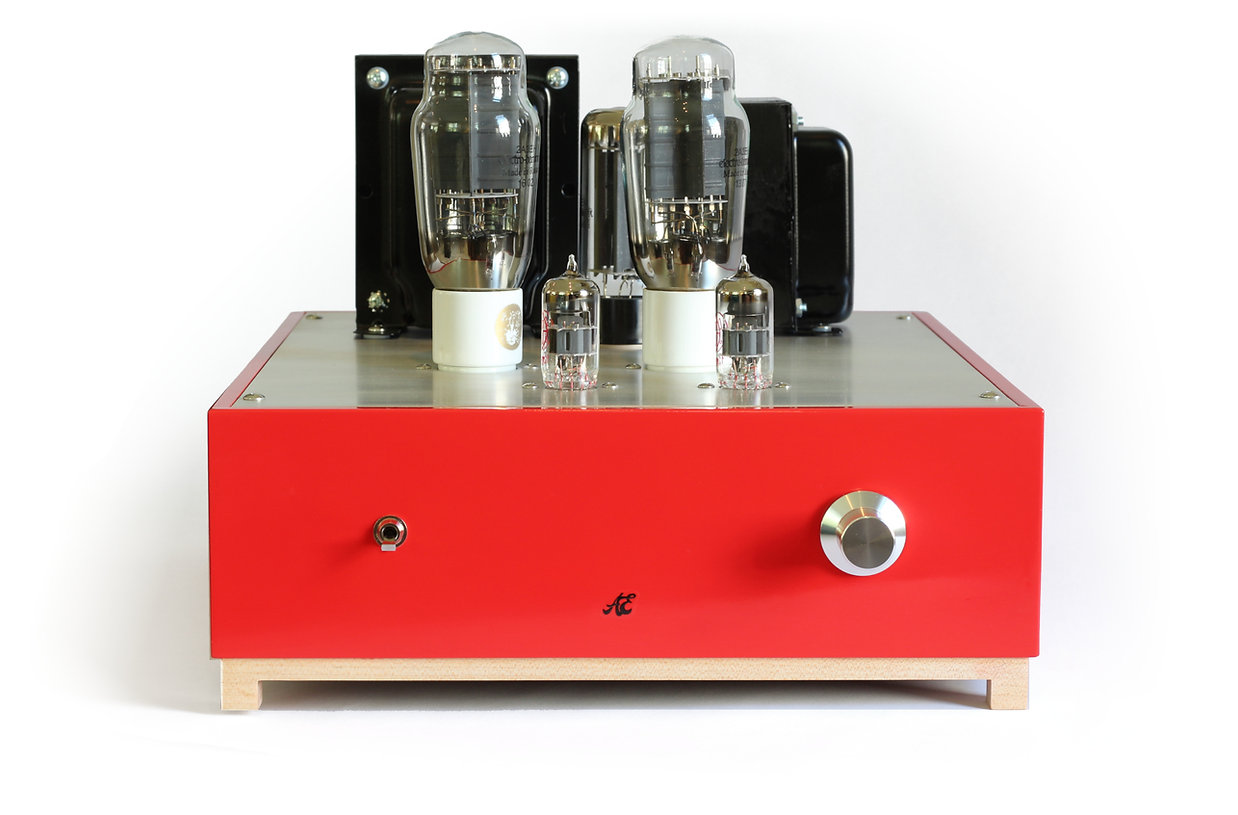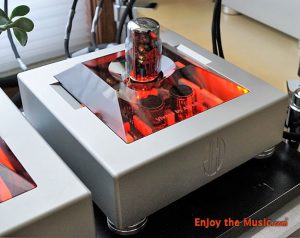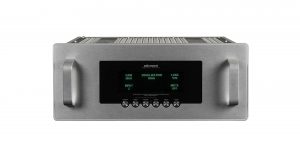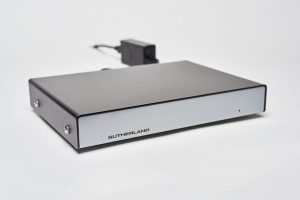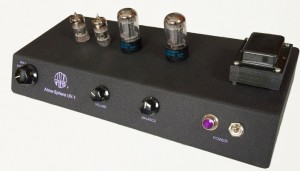I tend to be a believer in a less is more approach when it comes to my audio system; find a high end DAC like the Chord DAVE, and use it's outputs to drive the amplifier directly. In my experience putting anything between the DAC and the amplifier adds noise, colors the sound, and removes the special magic that a high end DAC and amp can achieve on their own. Of course, this philosophy flies out the window the minute you introduce a second source like a phono preamp. My solution to this problem was to swap cables when I wanted to change sources but I always hated doing it that way.
However, for the last few months I have not been doing any cable swaps, instead I have been sitting back and listening to my system with the Simaudio MOON 740P preamplifier. It really changed my point of view of what a preamplifier can do to a high end system.
Many of my audiophile friends have always been surprised that I do not use a dedicated preamp in my system. They tell me that high-end preamplifiers are completely transparent and that they provide drive, but do not color the sound of your system. I will say that, I, fundamentally disagree with that; I have listened to many high-end preamplifiers including the 740P and I have found that they all add coloration. However, the 740P is the first preamp that I found that provided coloration that enhanced my audio experience in some really interesting and profound ways. With the right system the 740P can provide that last bit of realism that takes your listening experience from simply enjoyable to jaw dropping.
Unpacking the MOON 740P
Simaudio sent me a brand new unit from the factory. It showed up in an extremely large, shockingly heavy box. The packaging was exceptional and after removing it from the box I was struck by how the preamp looked. MOON has an aggressive style, they are not afraid of strong angles, big volume knobs, or red dot displays. I personally loved the look. Picking up the 740P, there was no give whatsoever, no creaks, no cracks, it was as if I picked up a completely solid object. While this may be expected at this price point, I will tell you that I have had several components in for review at this price point or higher that have not had the build quality that the 740P provided.
The front of the 740P is dominated by an incredibly large, and great feeling volume knob. The knob is machined out of solid metal and uses an optical encoder. The rotation of the knob was smooth and I did not feel like the knob had excessive travel. I have had preamps in for review before with optical encoder volume knobs and always found the free travel cheapened the experience, but that was not the case with the 740P. I think the weight and size of the knob gives it just the right feel in the hand. The next largest element is the red dot display. It feels fantastically retro, and the thing I really liked about it was that I could sit across the room and clearly read it. The only nitpick I have about the design of the 740P is that there are too many buttons on the front. To be clear they all serve a purpose and I understand why Simaudio put them there, but I personally would prefer them to be hidden under a panel cover to make the preamp look a little less busy when it is sitting on the shelf.
Turning the unit around you will find three numbered RCA inputs, two numbered balanced inputs, and a variable RCA and balanced output which can be used at the same time. There is also a fixed output which is great if you want to feed what your listening to into an ADC or some other recording device.
The remote is what you would expect at this price point. It is big, heavy, made of metal, and has really nice buttons. I really want to stress that it appears that MOON spent a ton of time testing different buttons to get just the right mechanical feel for the 740P. It is really one of the best tactile experiences I have had in a long time, and while this may seem silly it is important that the equipment in your rack not only look and sound the part, but also feel the part, and MOON really delivered on this. They also ensured that the unit always felt responsive, whether using the remote or the front panel every click and push resulted in immediate feedback.
Features and Capabilities
The 740P uses dedicated integrated semiconductors to switch resistors in and out of the circuit to control volume and ensure the system is always perfectly channel matched, and that the circuit itself is as simple as possible. Each channel has its own power supply and when you look at pictures of the circuit board, you can tell that a high degree of planning went into the layout. On top of that each integrated circuit has its own independent inductive DC filter. This helps explain why this preamp is so quiet. This preamp could have been built smaller based on the space on the board. However, shrinking the board would have reduced sound quality due to risk of cross talk and electrical interference. It also would have made it challenging to have the level of power filtering MOON put into this preamp. It takes discipline to build something like this and its clear that MOON is a master of the craft.
The preamp takes advantage of its sophisticated volume control by offering channel balance controls, that work by offsetting the left or right channel's gain control. This allows for consistent balance from the lowest volume to the highest volume, and setting up this offset is simple to do.
The 740P also has the ability to bypass its internal (and extremely good) power supply, and connect to a similar external power supply used in the higher-end (and more expensive) 850P. While I did not have the external power supply on hand for my review, I really like that there is a built-in upgrade path that does not involve a full replacement of the 740P.
For those who have bought into the MOON ecosystem, each of their devices can be connected together and controlled as if they are one device. This is particularly cool if you have one of their streaming DACs and want to use the 740P as a volume control, but control the volume from the steamers interface.
MOON has added several additional features as well, including a +/- 10db input offset to help ensure that volume is consistent across each of your sources, and they have also ensured that every input can be set as a home theater bypass input, allowing you to integrate the MOON 740P into your home theater with ease.
I am a believer that with modern equipment, preamps should provide around 6 to 9dB of gain, and the 740P comes in at exactly 9dB of gain which I think is the sweet spot for both hot sources and slightly weaker sources.
Initial Setup
As the 740P was fresh from the factory I made sure to burn it in for at least 200 hours. MOON specifically recommended this and based on my research about this preamp it does seem like the break in time is really necessary. During this first 200 hours, I tried to let my system play and do other things. I wanted to avoid making an initial impression with the unit as I have found those initial impressions hard for me to shake as the review goes on.
I will say out of the box the 740P was dead silent at all volumes, rotating the volume knob produces no noise through my headphones or speakers, and in my system this was a first. I have had many preamps in my system, and this is the first one to be truly silent even when using my headphones.
Equipment used for this review:
- DAC/Streamer: Chord M-Scaler, Chord Dave, AURALiC ARIES G1
- Phono Stage: Whest Audio 40RDT
- Record Player: VPI Classic Signature
- Amplifier: ampsandsound Nautilus
- Speakers: Custom built high efficiency horn loaded monitors
- Headphones: HiFiMan SUSVARA
- Cabling: WyWires Platinum Interconnects
- Power Cords: WyWires Juice II
- Power Conditioner: PS Audio P12
Once I had the 740P setup, I set Roon on repeat, and let it run in for a full week. All of my impressions have been made after this initial break in.
A Shockingly Analog Experience with my Digital System
When I reviewed the ampsandsound Nautilus, I made a statement in that review that I wanted to get away from the terms "digital" and "analog" to describe systems. However, I have found it a hard habit to break. Describing a system as smooth, could be interpreted as "not detailed," or possibly "lacking dynamics," and both of these would be incorrect descriptors for what my system sounded like with the MOON 740P in it. However, when one describes something as "analog" I find that people associate that with a smooth but detailed sound that is effortless and natural. That is what the 740P did in my system with the Chord DAVE.
To be clear I do not think my system is overly digital. I find the DAVE to be incredibly natural as a DAC, and my single-ended tube amp provides just the right amount of detail and tube bliss to tame the DAVE's harsher tendencies on its own. However, adding the 740P into the system provided a level of natural sound that I simply was not expecting. Listening to my usual test album Live from Brooklyn Steel by Mika I was shocked at how natural his voice sounded. When listening to music I normally spend my time analyzing the space of the recording, and with the 740P in the system, I found myself sitting back and simply enjoying what I was listening to.
After a few weeks, I decided to sit down and try and figure out what was happening. Removing the 740P from my system removed that analog smoothness that I had noticed. Similarly, I found myself back in the habit of analyzing my music instead of listening to it. Returning the 740P brought me back to the state I described above.
One thing that was apparent after a few back and forth swaps was that the mid bass of my system with the 740P appeared to be slightly elevated. There was definitely more of a mid-bass slam, which I really enjoyed. It brought the rhythm section of music to life and caused me to engage more with the emotional experience of listening to music instead of the analytical side of it. I also noticed that the treble was smoother and seemed to be more extended. With the DAVE alone, it could be a little harsh. Instead of etching a sound stage as if carving the stage out of ice or rock, it was almost as if the sound stage was being molded from clay. It was softer but still incredibly detailed and lacked any of the hard edges that I would sometime encounter with the DAVE alone.
The 740P also allowed for much longer listening sessions. I found my listening sessions extending throughout the day and into the night with over 12+ hours getting clocked in a single sitting becoming a regular occurrence instead of an exception.
I had this experience whether I listened to the system through my HiFiMan SUSVARA's or through my horn loaded monitors. I do want to mention, though, that the additional mid-bass drive was more noticeable when listening through the speakers (when compared to my system without the 740P). I would not say it sounded as if I had new speakers, but I will say that it seemed to transform my horn loaded monitors into something closer to horn loaded floor standing speakers. Things just seemed bigger in all aspects and I will be honest and say I have not heard a component in my system in a long time that was able to make as big of an impact as the MOON 740P.
Spinning Vinyl with the 740P
Switching the preamp over to the its balanced inputs, I turned on the WHEST Audio 40RDT, and dropped the needle on my original pressing of Quadrophenia by The Who. I have referenced this record in my other reviews, but it is a really special record to me and I have kept it pristine. When the needle dropped I sat down and began to listen, notebook at the ready. When the first side finished, I looked down at my notebook and not a single note was taken, I was simply to engrossed and had forgotten to take notes.
The second, third, and forth sides were similar. The key was the mid-bass bump, it really brought the record to life. To put it simply the 740P rocked.
Moving to a more modern pressing, I grabbed Ariana Grande's Dangerous Woman, and dropped the needle on "Into You" and simply sat back and enjoyed. Switching to St. Vincent's MassEducation, the piano had just the right depth and weight, with the spatial queues getting just the right amount of emphasis.
Swapping the 740P out, I found that while the system still sounded great, but it lost that little bit of magic that the 740P brought to the table. The drive, especially in the mid-bass was gone, and the piano in "Pills" on MassEducation was simply missing something in comparison. The system sounded almost boring, but I will say it was not anywhere near as exciting as with the 740P in it.
Is the 740P Perfect?
To be clear I do not believe any piece of equipment is perfect. However, the 740P is right up there with some of the best HiFi equipment I have every had the privilege to enjoy in my audio rack. If I were to nitpick, and I mean truly nitpick, I found that at times the gloriously smooth analog sound did effect the soundstage precision. This is a really hard balance to strike, and the reality is that I personally like etched and really detailed sound stages. This is one of the reasons the Chord DAVE is a staple of my system, with the exception of the dCS Rossini and Vivaldi I have never heard a DAC render a soundstage like the DAVE. While the 740P does a lot of great things it does takes a little bit of this incredible transparency away (to be clear if the DAVE alone is 100% the DAVE + 740P is 96%). However, this slight drop is noticeable as long as the system you are using is incredibly transparent. In my case this drop in transparency was not noticeable on my speakers, but it was noticeable when using my HiFiMan SUSVARA. With the DAVE and Nautilus alone listening through my SUSVARA, the sound stage produced is fully out of head, with the DAVE, 740P, and Nautilus, that experience pulls closer to the head, rhythm is better but the space shrinks slightly.
Now the above is only relevant to me because I love highly detailed soundstages and have gotten very good at listening to music and creating a mental picture of where things are. When I asked a few friends of mine (also audiophiles) to listen, nearly all of them preferred the system with the 740P in it. All loved the extra drive in the mid-bass and described the system without the 740P as sounding dull by comparison. It was only upon pointing out the soundstage differences and asking them to listen again with that in mind that they saw what I was talking about, but even then, all agreed that the pros of the 740P outweighed the cons.
Wrapping up my thoughts on the MOON 740P
The MOON 740P is the first preamplifier that I felt enhanced my listening experience instead of degrading it. Its build quality is second to none and every single detail has clearly been thought through. It looks great on an equipment rack, and oozes luxury when you touch it.
Listening to the 740P brings a sense of drive and it seems to be able to tame that last bit of harshness that may haunt those with a digital system. This is a preamp for music lovers, those who do not want to analyze their recording by simply want to listen and toe tap with the beat. In my experience it seems like many audiophile companies have forgotten that listening to music needs to be fun. Those companies should take a page from MOON because they clearly know what they are doing.
If you are looking for a preamp and you have a system (without a preamp) that has a retail price of $25k and up, the Moon 740P is well worth auditioning. I have not experienced a better preamp at this point in my audiophile journey. If I was not in the process of buying a new home, the 740P would not have left my system, and maybe one day will come back to it. It did nearly everything right, and looked great while doing it. I look forward to hopefully having the chance to explore the rest of the MOON line, if the 740P is any indicator I need to first make sure my wallet is ready.
MOON 740P Preamplifier
Retail Price: $9000
Simaudio




